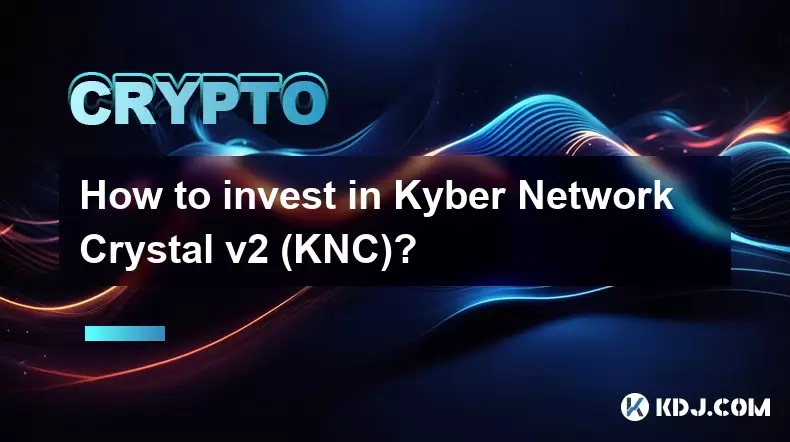-
 Bitcoin
Bitcoin $119200
-0.90% -
 Ethereum
Ethereum $4589
-2.03% -
 XRP
XRP $3.117
-4.82% -
 Tether USDt
Tether USDt $1.000
0.04% -
 BNB
BNB $839.9
-1.38% -
 Solana
Solana $196.4
-2.55% -
 USDC
USDC $0.9999
0.00% -
 Dogecoin
Dogecoin $0.2270
-7.72% -
 TRON
TRON $0.3605
0.74% -
 Cardano
Cardano $0.9306
5.96% -
 Chainlink
Chainlink $22.51
-5.00% -
 Hyperliquid
Hyperliquid $45.20
-1.80% -
 Sui
Sui $3.794
-5.63% -
 Stellar
Stellar $0.4259
-5.59% -
 Bitcoin Cash
Bitcoin Cash $593.1
-2.38% -
 Ethena USDe
Ethena USDe $1.000
-0.01% -
 Hedera
Hedera $0.2540
-3.84% -
 Avalanche
Avalanche $23.93
-4.50% -
 Litecoin
Litecoin $124.1
-5.62% -
 Toncoin
Toncoin $3.398
-1.33% -
 UNUS SED LEO
UNUS SED LEO $9.274
0.30% -
 Shiba Inu
Shiba Inu $0.00001305
-5.57% -
 Uniswap
Uniswap $11.06
-8.90% -
 Polkadot
Polkadot $4.034
-4.88% -
 OKB
OKB $99.33
-10.53% -
 Dai
Dai $0.9999
-0.01% -
 Bitget Token
Bitget Token $4.638
-3.60% -
 Cronos
Cronos $0.1541
-8.58% -
 Aave
Aave $313.0
-4.94% -
 Pepe
Pepe $0.00001127
-8.04%
LTO Network currency circulation
LTO Network's hybrid blockchain architecture combines the security of blockchain with the scalability of a hybrid database, enabling efficient processing of transactions related to decentralized identity and document management.
Dec 31, 2024 at 10:58 pm

LTO Network Currency Circulation: A Comprehensive Overview
Key Points:
- LTO Network's unique blockchain architecture
- Tokenomics and distribution of LTO tokens
- Staking rewards and incentives
- Partnerships and integrations
- Market dynamics and price performance
LTO Network's Blockchain Architecture
LTO Network is a blockchain platform designed specifically for decentralized identity and document management. It employs a hybrid blockchain architecture that combines the security and immutability of a blockchain with the scalability and efficiency of a hybrid database. This architecture allows LTO Network to process large volumes of transactions while maintaining the integrity and trust of the network.
Tokenomics and Distribution of LTO Tokens
The LTO token is the native cryptocurrency of the LTO Network blockchain. It is used for various purposes within the ecosystem, including:
- Transaction Fees: LTO tokens are required to pay for transactions on the LTO Network.
- Staking Rewards: LTO holders can stake their tokens to secure the network and earn rewards.
- Governance: LTO token holders participate in the governance of the network through voting on proposals that affect its development and operations.
The total supply of LTO tokens is limited to 400 million, with approximately 63% of the tokens being in circulation as of December 2022. The remaining tokens are held by the LTO Foundation and used for development, marketing, and ecosystem support.
Staking Rewards and Incentives
LTO Network offers a staking rewards program to incentivize users to hold and stake their LTO tokens. By staking their tokens, users contribute to the security and reliability of the network and earn rewards in the form of additional LTO tokens. The staking rewards rate is currently set at approximately 12% annual percentage yield (APY).
Partnerships and Integrations
LTO Network has formed strategic partnerships with various organizations in the blockchain and enterprise technology space, including Microsoft, IBM, and Oracle. These partnerships provide LTO Network with access to new markets, resources, and technical expertise.
LTO Network has also integrated with a range of popular platforms and applications, including decentralized identity providers, document management systems, and supply chain management solutions. This integration enables seamless integration of LTO Network's blockchain capabilities into real-world applications.
Market Dynamics and Price Performance
The price of LTO tokens has fluctuated significantly over time, reflecting market conditions and the overall cryptocurrency market sentiment. In 2021, the price of LTO tokens reached an all-time high of approximately $1.50. However, the price has since experienced a correction and is currently trading at around $0.50 as of December 2022.
The market dynamics for LTO tokens are influenced by factors such as network growth, adoption, and partnerships, as well as broader macroeconomic conditions and the performance of the cryptocurrency market in general.
FAQs
What is the difference between LTO Network and other blockchain platforms?
LTO Network is designed specifically for decentralized identity and document management, while other blockchain platforms may have a broader range of use cases. LTO Network's hybrid blockchain architecture provides scalability and efficiency, making it well-suited for handling large volumes of transactions related to digital identity and document management.
How does staking work on LTO Network?
To stake LTO tokens, users must delegate their tokens to a validator node on the LTO Network. Validator nodes are responsible for securing the network by validating transactions and adding them to the blockchain. Stakers earn rewards proportional to the amount of tokens they stake and the length of time they stake them.
What is the future outlook for LTO Network?
LTO Network is positioned to continue growing in the future as the demand for decentralized identity and document management solutions increases. The platform's partnership with major organizations and its integration with popular applications provide a solid foundation for adoption and growth.
Disclaimer:info@kdj.com
The information provided is not trading advice. kdj.com does not assume any responsibility for any investments made based on the information provided in this article. Cryptocurrencies are highly volatile and it is highly recommended that you invest with caution after thorough research!
If you believe that the content used on this website infringes your copyright, please contact us immediately (info@kdj.com) and we will delete it promptly.
- Kazakhstan's Crypto Leap: Bitcoin ETF and Central Asia's Digital Finance Future
- 2025-08-13 12:45:19
- BlockDAG Presale Blazes Past $371M: Fundraising Frenzy Fuels Crypto Sensation
- 2025-08-13 13:05:21
- Meme Coins: Chasing the 2025 Surge – Which Will Moonshot?
- 2025-08-13 10:25:23
- Bitcoin's Wild Ride: Rally, Pullback, and What's Next
- 2025-08-13 10:25:23
- Bitcoin, Bitmax, and Institutional Demand: A New Era of Crypto Investment
- 2025-08-13 10:45:12
- Solana, ROAM, and Airdrops: What's the Buzz in 2025?
- 2025-08-13 11:35:13
Related knowledge

How to purchase Aragon (ANT)?
Aug 09,2025 at 11:56pm
Understanding Aragon (ANT) and Its PurposeAragon (ANT) is a decentralized governance token that powers the Aragon Network, a platform built on the Eth...

Where to trade Band Protocol (BAND)?
Aug 10,2025 at 11:36pm
Understanding the Role of Private Keys in Cryptocurrency WalletsIn the world of cryptocurrency, a private key is one of the most critical components o...

What is the most secure way to buy Ocean Protocol (OCEAN)?
Aug 10,2025 at 01:01pm
Understanding Ocean Protocol (OCEAN) and Its EcosystemOcean Protocol (OCEAN) is a decentralized data exchange platform built on blockchain technology,...

How to invest in Kyber Network Crystal v2 (KNC)?
Aug 12,2025 at 05:21pm
Understanding Kyber Network Crystal v2 (KNC)Kyber Network is a decentralized liquidity hub built on the Ethereum blockchain that enables instant token...

Where can I buy UMA (UMA)?
Aug 07,2025 at 06:42pm
Understanding UMA and Its Role in Decentralized FinanceUMA (Universal Market Access) is an Ethereum-based decentralized finance (DeFi) protocol design...

How to sell my Ren (REN) tokens?
Aug 13,2025 at 11:35am
Understanding REN Tokens and Their Role in Decentralized FinanceREN is an ERC-20 token that powers the Ren protocol, a decentralized interoperability ...

How to purchase Aragon (ANT)?
Aug 09,2025 at 11:56pm
Understanding Aragon (ANT) and Its PurposeAragon (ANT) is a decentralized governance token that powers the Aragon Network, a platform built on the Eth...

Where to trade Band Protocol (BAND)?
Aug 10,2025 at 11:36pm
Understanding the Role of Private Keys in Cryptocurrency WalletsIn the world of cryptocurrency, a private key is one of the most critical components o...

What is the most secure way to buy Ocean Protocol (OCEAN)?
Aug 10,2025 at 01:01pm
Understanding Ocean Protocol (OCEAN) and Its EcosystemOcean Protocol (OCEAN) is a decentralized data exchange platform built on blockchain technology,...

How to invest in Kyber Network Crystal v2 (KNC)?
Aug 12,2025 at 05:21pm
Understanding Kyber Network Crystal v2 (KNC)Kyber Network is a decentralized liquidity hub built on the Ethereum blockchain that enables instant token...

Where can I buy UMA (UMA)?
Aug 07,2025 at 06:42pm
Understanding UMA and Its Role in Decentralized FinanceUMA (Universal Market Access) is an Ethereum-based decentralized finance (DeFi) protocol design...

How to sell my Ren (REN) tokens?
Aug 13,2025 at 11:35am
Understanding REN Tokens and Their Role in Decentralized FinanceREN is an ERC-20 token that powers the Ren protocol, a decentralized interoperability ...
See all articles

























































































